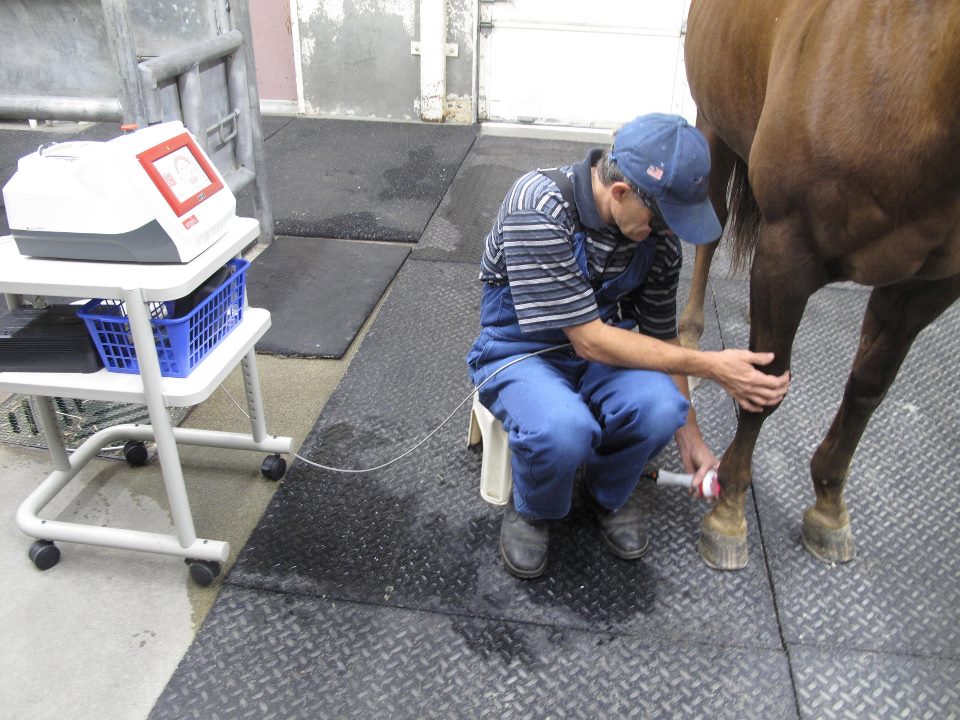Equine Therapy for Kid: Emotional and Behavioral Assistance Explained
Equine Therapy for Kid: Emotional and Behavioral Assistance Explained
Blog Article
Laser Treatment in Horse Treatment: A Modern Strategy to Improving Equine Health
Laser treatment has become a crucial method in equine treatment, making use of focused light energy to cultivate mobile repair work and quicken recuperation from a range of ailments. This non-invasive strategy is especially reliable in managing musculoskeletal injuries, injuries, and inflammatory problems, dramatically boosting general equine health. By stimulating mitochondrial activity and boosting ATP production, laser therapy not just boosts blood circulation yet likewise provides significant pain alleviation. As this innovative therapy remains to obtain traction, it opens up fascinating opportunities for attending to persistent conditions like joint inflammation and unguis troubles, indicating a transformative change in vet care. What makes this technique specifically compelling?
Recognizing Laser Therapy
Laser treatment, a non-invasive therapy modality, has actually acquired substantial traction in equine medicine due to its efficiency in promoting recovery and discomfort relief. This sophisticated healing method uses concentrated light power to penetrate cells, promoting mobile repair and regrowth. The underlying mechanism includes the excitement of cellular mitochondria, causing raised manufacturing of adenosine triphosphate (ATP), the energy currency of cells. Improved ATP degrees quicken cells repair procedures and decrease inflammation, making laser therapy especially reliable for treating bone and joint injuries, injuries, and other inflammatory problems in steeds.
There are numerous sorts of lasers utilized in equine treatment, each with particular wavelengths and power outcomes tailored to various restorative requirements. Low-level laser treatment (LLLT), likewise understood as cool laser treatment, utilizes reduced power degrees to boost cell feature without triggering thermal damages. High-intensity laser treatment (HILT), on the other hand, uses greater power levels to achieve much deeper cells penetration and more substantial restorative effects.
Veterinarians make use of numerous laser gadgets and methods relying on the condition being dealt with and the desired depth of cells penetration. Appropriate training and knowledge are essential for making certain the safe and reliable application of laser treatment, thus optimizing its therapeutic capacity while decreasing risks.
Benefits for Horse Health
With a strong understanding of just how laser therapy works, it is important to explore its numerous benefits for equine wellness. By stimulating cellular function, laser treatment advertises faster injury recovery and help in the regrowth of broken cells.
Moreover, laser therapy has been shown to improve circulation, therefore enhancing blood circulation to affected locations. Boosted flow makes sure that necessary nutrients and oxygen are provided more successfully, promoting the recovery process. In addition, laser therapy's anti-inflammatory results assist in decreasing swelling and discomfort, which is vital for the general health of the equine.
Pain monitoring is one more significant advantage. By launching endorphins and blocking discomfort signals, laser treatment offers effective, non-invasive remedy for both severe and chronic discomfort. This can contribute to improved mobility and top quality of life for the animal.
Finally, laser treatment is a non-invasive treatment option, decreasing the threat of problems related to even more intrusive procedures. Its versatility and efficiency make it an invaluable device in contemporary equine vet medicine.
Usual Problems Treated

An additional widespread condition treated with laser treatment is joint inflammation. Horses suffering from both acute and chronic arthritis take advantage of the anti-inflammatory impacts of laser treatment, which assists to relieve discomfort and boost joint function. Additionally, laser therapy is employed in the management of wounds. Whether handling surgical cuts or distressing injuries, the method advertises much faster tissue repair service and lowers the risk of infection.
Equine breathing problems, such as reoccurring respiratory tract blockage (RAO), also respond favorably to laser therapy. Laser treatment is beneficial in dealing with hoof issues, including laminitis and abscesses.
Procedure and Safety
Carrying out laser therapy in equine therapy involves a careful treatment to guarantee both efficiency and security. Equine Therapy. The procedure begins with a complete veterinary evaluation to establish the suitability of laser treatment for the steed's particular problem. As soon as deemed ideal, the treatment area is prepared by cleansing and, if necessary, clipping the hair to enhance laser infiltration
The specialist needs to pick the appropriate sort of laser, More Bonuses generally a low-level laser (LLLT) or a high-power laser (HPL), depending upon the problem being treated. The laser tool is after that calibrated to the proper wavelength, power, and period settings. During the application, the professional relocates the laser over the targeted location in a systematic way, making certain consistent and also direct exposure.
Safety procedures are strictly complied with, including making use of safety glasses for both the expert and the steed. Additionally, it is important to keep an eye on the steed for any kind of indicators of pain or damaging reactions throughout the procedure. Post-treatment, the horse is frequently provided a period of rest to allow the therapeutic effects to manifest.

Future of Equine Laser Therapy
As innovations in vet medicine proceed to unravel, the future of equine laser treatment holds significant assurance. Emerging innovations and deeper clinical insights are established to improve and broaden the applications of laser treatment for equines.
Additionally, ongoing research right into the molecular and mobile systems of laser treatment will likely yield maximized protocols tailored to details conditions, boosting effectiveness and minimizing therapy times. Customized therapy strategies based on hereditary and biochemical pens could come true, guaranteeing that each steed receives the most proper and reliable care.
Moreover, governing developments and standardization of procedures will improve the credibility and dependability of laser treatment browse around these guys in equine technique. Equine Therapy. As these innovations remain to emerge, equine laser treatment is positioned to come to be an essential part of vet treatment, offering enhanced healing and enhanced lifestyle for steeds around the world
Conclusion

Report this page